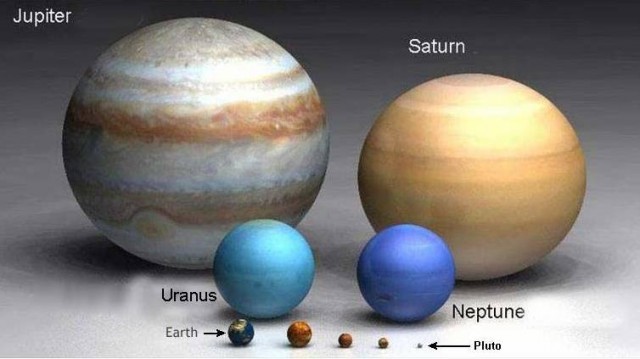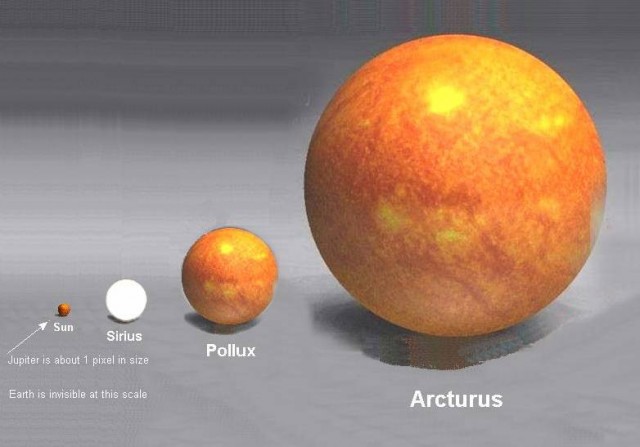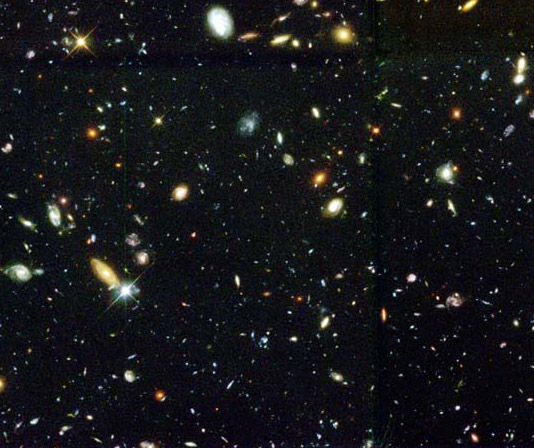I am a big fan of science, particularly astronomy. It is incredible to sit, smoke and think about other planets, other stars, other galaxies and really ponder the mind-blowing size of the universe. I invite you, fellow Weedists, to come along this journey with me.
To understand the size of the universe beyond the earth, we should first examine the size of the Earth itself. The Earth is 7,918 miles (12,742 kilometers) in diameter, which is a fairly difficult size to wrap one’s head around. If people were to lie feet to head in a chain around the equator, almost 22 million people (6 feet tall) would be required. If you could drive 60 miles per hour (a little less than 100 kilometers per hour) along the equator for 12 hours per day, it would take almost 35 days to circle the Earth.
Once we’ve had a nice bowl to contemplate the real vastness of our planet, it’s time to take a look at the rest of our solar system. Our cosmic brothers and sisters come in a wide variety of compositions and properties, the diversity of which will keep scientists busy for generations to come. For this article, we are only interested in their sizes. Mercury, the smallest planet in the solar system now that Pluto is no longer considered a planet, is just over 3,000 miles (under 5,000 kilometers) in diameter. Mars is about 4,200 miles (about 6,800 kilometers) in diameter. Venus is only slightly smaller than Earth, with a diameter of about 7,500 miles. These bodies make up the inner solar system, and are somewhat comparable to the size of the Earth that we just explored. The outer solar system, however, is populated by some much larger objects.
Neptune, the next smallest planet in our solar system, is over 30,000 miles (almost 50,000 kilometers) in diameter. Uranus is only slightly larger than Neptune, over 31,000 miles in diameter. Driving the equator of one of these planets would take roughly 139 days (about 4.5 months). Saturn has a diameter of over 72,000 miles, it would take about 326 days to drive around its equator. Jupiter, the biggest planet in our solar system, has a diameter of almost 87,000 miles (almost 140,000 kilometers) and a trip around its equator would take about 388 days, more than one year of driving 12 hours each day. Before we go getting the Sun involved, I suggest we take a break for another contemplative bowl.
The Sun is by far the largest object in the solar system. It has a diameter of almost 865,000 miles (1,392,000 kilometers). If you were to drive around the sun’s equator at 60 mph for 12 hours/day, it would take you an astounding 3,769 days. That’s more than 10 years to make a single trip around the sun.
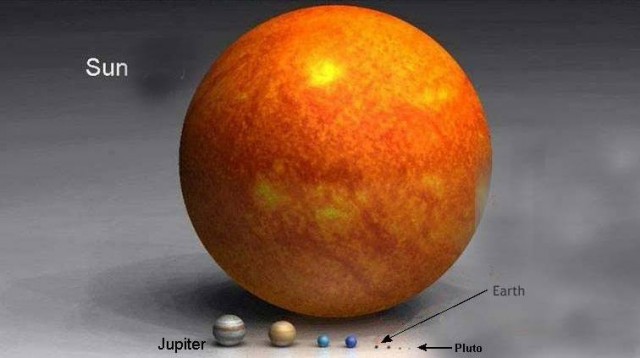 Although the sun is by far the largest object in our solar system, it is not very big for a star. One way our Sun is often described is as a Yellow Dwarf, and with good reason. Have a look at this next picture, and try to remember that the Sun, the little runt in the picture, is 865,000 miles in diameter. And as it points out, Jupiter would only take up a single pixel:
Although the sun is by far the largest object in our solar system, it is not very big for a star. One way our Sun is often described is as a Yellow Dwarf, and with good reason. Have a look at this next picture, and try to remember that the Sun, the little runt in the picture, is 865,000 miles in diameter. And as it points out, Jupiter would only take up a single pixel:
Still with me? How about with this next one, where the Sun is only a single pixel?
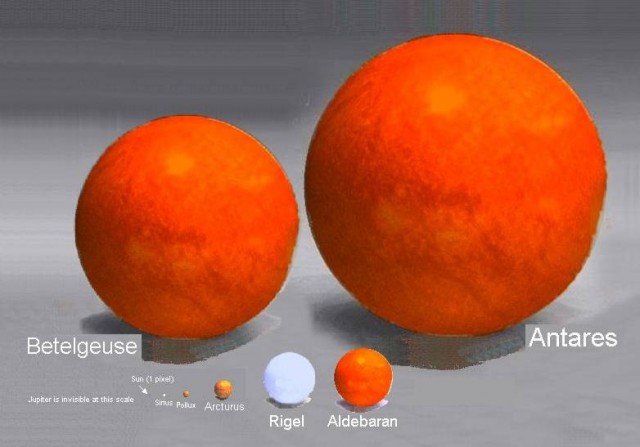 Betelgeuse is one of the largest known stars, and a familiar one. It is the glowing red ‘shoulder’ of Orion, and has a diameter of 600,000,000 miles! If we use the driving analogy from above, it would take a driver 2,617,994 days, or almost 7,168 years to circle the equator of this celestial monster!
Betelgeuse is one of the largest known stars, and a familiar one. It is the glowing red ‘shoulder’ of Orion, and has a diameter of 600,000,000 miles! If we use the driving analogy from above, it would take a driver 2,617,994 days, or almost 7,168 years to circle the equator of this celestial monster!
Now that we have burdened our brains with the struggle to contemplate something 600 million miles in diameter, it is time to kick it up a notch, and examine the size of the universe itself. That is, we will see how far apart these enormous objects are.
To begin, let’s look at how far away our nearest celestial neighbor is, the Moon. The Moon is roughly 230,000 miles away from Earth. If we could drive 60 mph 12 hours/day in a straight line to the Moon, the journey would take about 320 days. And that is the closest object to Earth.
The size of our solar system requires a pretty phenomenal jump in distance scales, so let’s break it down a little. The distance from the Sun to Earth is about 93,000,000 miles. If we keep to our analogy, it would take about 354 years to travel from the Sun to Earth. The distance from the Sun to Neptune, the outer-most planet, is about 2,798,000,000 miles! Check out the video below, Bill Nye the Science Guy has a great description of these distances as well.
To drive from the Sun to Neptune would take almost 10,640 years! And Neptune does not mark the edge of our solar system, either. There are many objects, such as Pluto, that orbit the sun farther out than this. Much farther, it turns out. The Oort Cloud extends as far as 1 light year from the Sun, which is almost 6 trillion miles! In our driving analogy, it would take a driver over 22 million years to drive from the Sun to the edge of our solar system!
The closest star to us, Proxima Centauri, is 4.22 light years away. That’s a 100 million year drive to reach the nearest star to our Sun. Betelgeuse is 520 light years away, and at a drive of about 11.5 billion years is still very nearby for a star.
It is at this point I’d like to bring in the size of galaxies. The Small Magellanic Cloud is a dwarf galaxy that orbits our own Milky Way galaxy, and it has a diameter of about 7,000 light years. It would take 154 billion years (more than ten times the age of the universe) to drive from one end of this small galaxy to the other. Our own Milky Way (a pretty large galaxy) is a spiral galaxy about 100,000 light years across. Driving across our galaxy would take 2.2 trillion years, something like 150 times the age of our universe.
Next, let’s discuss Andromeda. Andromeda is slightly larger than the Milky Way, and is the closest large galaxy to our own. It is 2.54 million light years from our galaxy. Driving to Andromeda would take almost 56 trillion years.
Now let’s jump right to the really mind-blowing part of all this: The size of the universe. We can see objects over 13 billion light years away, in all directions. All indications are that each of these most distant objects are in the same situation as us, and the objects at the edge of their vision almost certainly are too. The universe could be a truly infinite space, but at the very least its size is well beyond anything we can possibly see. And doing the math of 13 billion light years, our observable universe would take 286,000 trillion years to drive through. That’s just a straight line through the center of what we can see.
The size of the universe truly is mind-blowing. The opening scene from the 1997 movie Contact, adapted from Carl Sagan‘s novel and directed by Robert Zemeckis, always put my mind in overdrive:
If this article leaves you feeling small and insignificant, don’t worry. The human body is a universe in itself, which we’ll get in to when I discuss the other half of the size of the universe: Inner Space.









